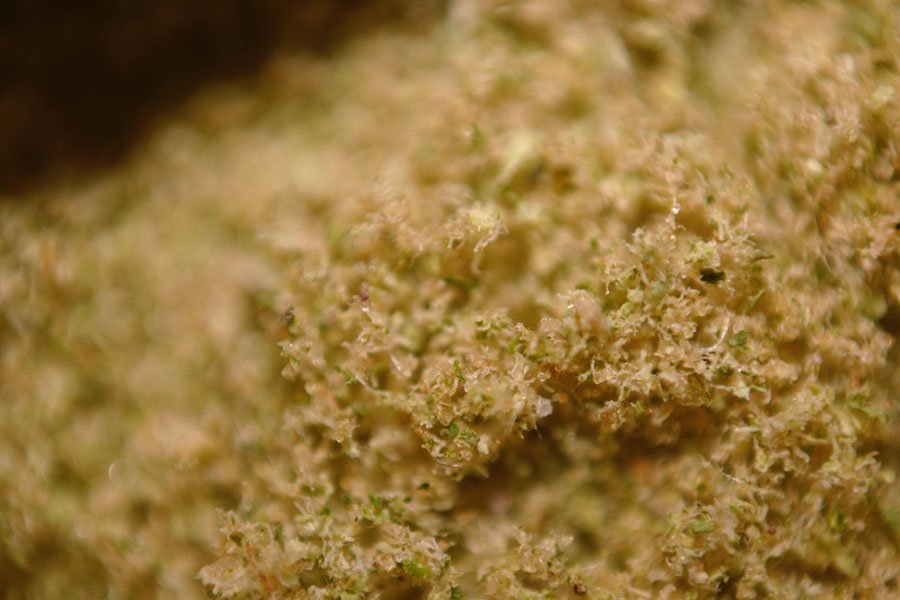How to Tell if Kief Is Bad
With the fast-paced advancements in the cannabis industry and the growing need for new products, dispensaries must meet consumer demands. In recent years, kief has become an increasingly sought-after add-on to pre-rolls. Still, like with any other consumable product, you must know how to tell if kief is bad.
If you like to store cannabis products to last you for longer periods, it is a smart idea to be aware of their shelf life. So, how long does it take for kief to go bad? We will explore this and more below, so read on!
Source: shutterstock.com / Photo Contributor: Dmytro Tyshchenko
A Brief Overview
The crystalline, resinous glands called trichomes that fall off the cannabis plant are commonly referred to as kief. Kief has greater potency than the cannabis bud.
Unfortunately, the trichomes come off throughout the production process. Despite the trichomes coming off naturally when they dry up, consumers may collect the kief that falls off in the grinder to add to their joints.
In contrast, collecting and infusing pre-rolls is time-consuming for dispensaries, or it used to be. With streamlined solutions like our state-of-the-art kief dusting machine for pre-rolls, dispensaries may produce large quantities of pre-rolls coated with kief in record times.
How to Tell If Kief Is Bad
Kief might still be consumable after its peak unless you have underlying health issues. If you decide to stock up on kief, you should be aware that, with time, its potency might decrease.
However, decreased potency does not mean the kief has gone bad. You may still use it even if it is stale. Although kief has an endless shelf life, it might harm your health if it's too old or tainted with bacteria and mold. Some of the signs pointing out a degraded kief are the following:
Changes in color
Loss of aroma
Texture alterations
Presence of contaminants
Decreased potency
Changes in color
The first sign you may notice that a kief is old and has started to degrade is through changes in its color. Stale kief will have clear signs of discoloration, like white or gray spots. Also, if the color of the is visibly darkened from its amber appearance, it is a clear indicator that the kief is past its prime.
Loss of aroma
Another indicator of how to tell if kief is bad is the absence of its distinct earthy cannabis scent. Once the kief starts turning, it may emit an unpleasant and musty aroma reminiscent of damp space or hay. But do you know how to tell if kief is moldy?
A musty, mildewy aroma may also indicate the presence of mold. If you notice a mildewy smell, it is best to dispose of the kief and not risk your health by ingesting it. Moreover, improperly stored kief may draw in aromas from its container.
Texture alterations
Kief that is past its 'best by' date may be easily identifiable through its changing texture. You can test this by taking your cannabis and rubbing it between your hands. Any signs of clumping, stickiness, or crumbling kief between your fingers point to a kief that is starting to go stale.
Presence of contaminants
Bacteria, mold, mildew, and other contaminants may start growing on old kief. The presence of any of these contaminants may be incredibly harmful to your health. Contaminated kief may cause adverse health effects, such as coughing, chest pain, allergic reactions, eye irritation, etc.
Source: shutterstock.com / Photo Contributor: T Odinson
Decreased potency
The potency of cannabis starts to degrade significantly after six months of storage. In fact, according to one study, the results showed a decrease in THC levels between 64% and 74% over time. This means that the longer your kief remains stored, the more the effects upon consumption may be reduced.
What Does Moldy Kief Look Like?
Moldy kief may be a bit trickier to spot due to the visual similarities with the trichomes. Trichomes are tall and thin resinous glands that cover cannabis flowers. When observed under a microscope, trichomes have white hairs with mushroom-like tips.
In contrast, mold is a type of fungus that may develop on kief stored in a humid environment without proper ventilation. Moldy kief typically looks like a white, grayish coating.
Kief appearance: Performing a visual and sensory inspection
While it may be easy to mistake trichomes for mold on first look, on closer inspection, you may be able to see some differences. For example, unlike mold, trichomes will look almost like shiny, glittering crystals.
However, mold will have a powdery appearance with a damp, musty, mildewy odor. If you cannot identify moldy kief solely visually, try smelling the bud. If it smells like sweat, it is mold.
Also, if the buds feel damp when you touch them without making a sound when you pull them apart, it is a sign of improperly dried cannabis. Damp cannabis has a higher chance of developing mold.
It is best to avoid smoking the kief and dispose of it. If you are allergic to mold, the effects may be more adverse and even cause inflammation of your lungs or sinuses with the following symptoms:
Chest pain
Wheezing
Sinus pain
Congestion
Drainage
Fever
Redness and itchiness in the eyes
Lethargy
Memory loss
Source: shutterstock.com / Photo Contributor: Dmytro Tyshchenko
Conclusion
To sum up, if you wonder how to tell if kief is bad, you may do so in several ways. You may conduct a visual and sensory inspection. If your kief appears to have discoloration, a musty smell, or feel damp to the touch, it is a sign of it being past its prime.
To be safe, it is best to dispose of the kief if you notice anything amiss rather than use it.



